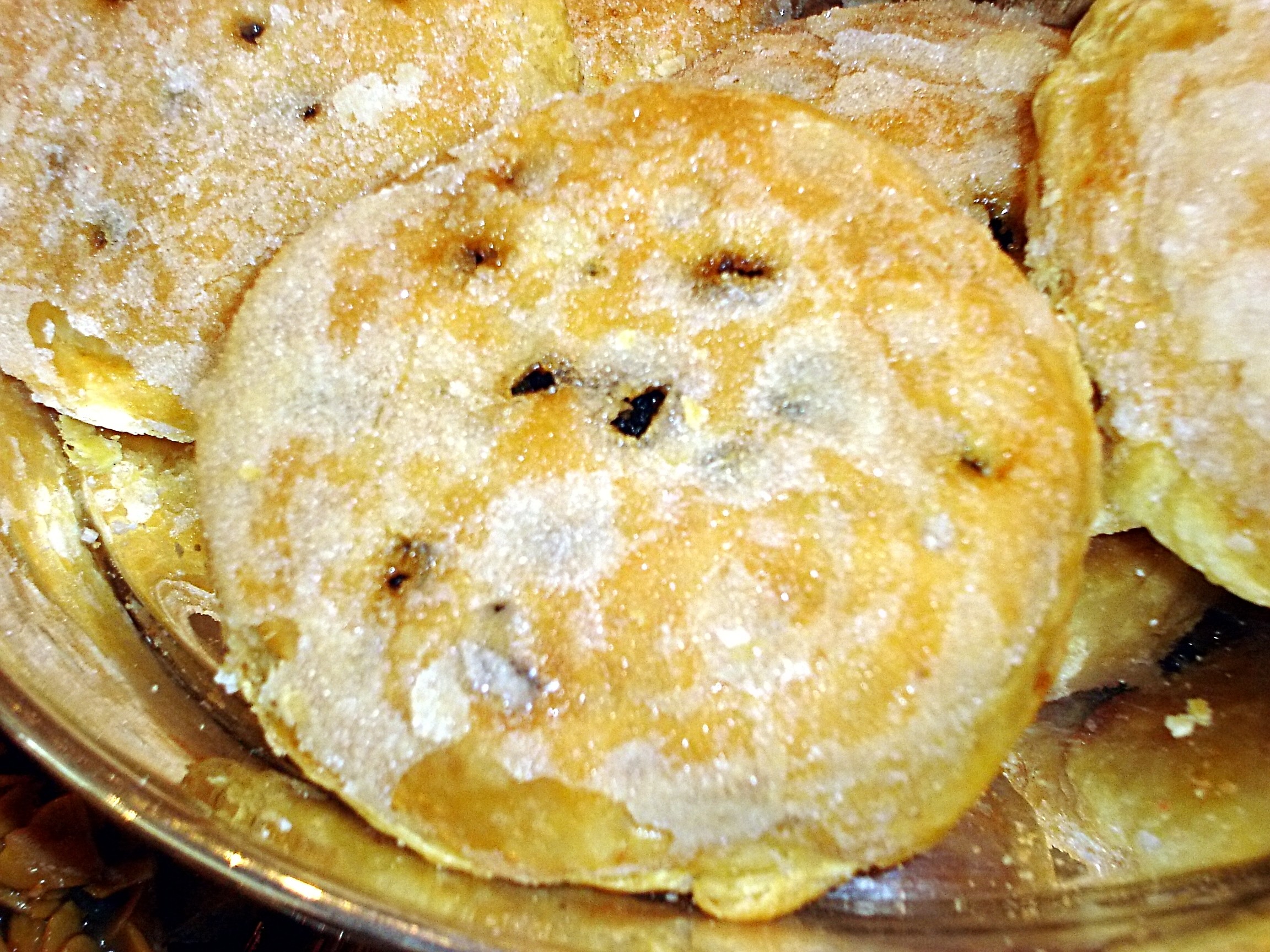Like many other traditional English cakes and buns, the Eccles cake – flaky pastry with a currant filling, topped with sugar – is named after the town where it was first made, Eccles, historically part of Lancashire but now in the City of Salford. The product does not have Protected Geographical Status however, so may be manufactured anywhere and still labelled as an Eccles cake.[1]
The earliest published recipe for what is recognisably an Eccles cake appears in Elizabeth Raffald18th-century English entrepreneur, author of The Experienced English Housekeeper, and possible inventor of the Eccles cake. ‘s The Experienced English Housekeeper (1769), in which she calls them sweet patties. Raffald filled her flaky pastry with mincemeat,[a]Raffald’s list of ingredients also includes the meat of a boiled calf’s foot (gelatine), apples, oranges, nutmeg, egg yolk and French brandy.[2] although today currants are used instead.[2][3]
James Birch was the first person to sell Eccles cakes commercially, from a shop in Eccles at the corner of Vicarage Road and St Mary’s Road (now Church Street), probably in 1796.[2]
Eccles cakes are sometimes referred to affectionately as dead fly pies.[2]
Notes
| a | Raffald’s list of ingredients also includes the meat of a boiled calf’s foot (gelatine), apples, oranges, nutmeg, egg yolk and French brandy.[2] |
|---|

